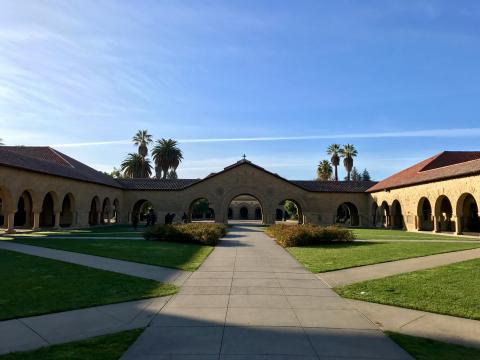Top Projected Colleges of the 2030s
May 29,2024
As we move deeper into the 21st century, the landscape of higher education continues to evolve, driven by technological advancements, changing societal needs, and innovative educational models. The colleges and universities that will lead in the 2030s are those that adapt to these changes and redefine the traditional approaches to education. Here, we explore the top projected colleges of the 2030s, highlighting what sets them apart and why they are poised to shape the future of higher education.
1. Massachusetts Institute of Technology (MIT)
Why MIT is Leading the Way
- Technological Innovation: MIT's emphasis on cutting-edge research and technology positions it at the forefront of educational advancement. The integration of artificial intelligence, quantum computing, and biotechnology into its curriculum ensures that students are prepared for the future job market.
- Interdisciplinary Approach: MIT's commitment to interdisciplinary education fosters collaboration across fields, encouraging students to tackle complex, real-world problems with diverse perspectives.
What to Watch For
- AI and Robotics Programs: Expansion of AI and robotics programs, including ethical AI and human-robot interaction studies.
- Sustainability Initiatives: Leading in sustainability research and green technology innovations.
2. Stanford University
Why Stanford is a Future Leader
- Entrepreneurial Ecosystem: Located in Silicon Valley, Stanford has a robust entrepreneurial ecosystem that encourages students to develop and launch startups. The university's strong connections with the tech industry provide unparalleled opportunities for innovation and career advancement.
- Research and Development: Stanford's substantial investment in research, particularly in areas like biosciences, computer science, and engineering, ensures its continued influence and relevance.
What to Watch For
- Healthcare Innovations: Advancements in personalized medicine and digital health.
- Global Collaborations: Increased international partnerships to solve global challenges.
3. University of California, Berkeley
Why Berkeley is Poised for the Future
- Public Policy and Social Impact: Berkeley's strong focus on public policy, social justice, and environmental sustainability positions it as a leader in addressing critical societal issues.
- Diverse Academic Offerings: With a wide range of programs and a commitment to interdisciplinary education, Berkeley prepares students for diverse career paths.
What to Watch For
- Climate Change Research: Pioneering climate change mitigation and adaptation strategies.
- Equity and Inclusion: Leading initiatives in diversity, equity, and inclusion within academia and beyond.
4. University of Oxford
Why Oxford Remains Relevant
- Historical Prestige and Modern Adaptation: Combining centuries of academic excellence with modern innovation, Oxford continues to be a beacon of high-quality education and research.
- Global Influence: As a global institution, Oxford attracts top talent from around the world and fosters international collaborations.
What to Watch For
- AI and Humanities Integration: Unique programs that merge AI with humanities, exploring ethical, philosophical, and societal impacts.
- Biomedical Research: Continued leadership in medical and biomedical research, especially in response to global health challenges.
5. Tsinghua University
Why Tsinghua is a Future Powerhouse
- Rapid Growth and Investment: Tsinghua's significant investment in research facilities and academic programs has propelled it to the forefront of global education.
- STEM Excellence: Strong emphasis on science, technology, engineering, and mathematics (STEM) disciplines, combined with robust government support.
What to Watch For
- Innovation Hubs: Development of innovation hubs that connect academia with industry leaders.
- Sustainable Development: Leadership in sustainable development projects and green technology.
6. Indian Institute of Technology (IIT) Bombay
Why IIT Bombay is Emerging Strong
- Technical Prowess: Renowned for its rigorous technical education and research, IIT Bombay produces highly skilled engineers and technologists.
- Global Recognition: Increasing global recognition and partnerships with leading universities worldwide enhance its educational impact.
What to Watch For
- Advanced Engineering: Cutting-edge research in advanced engineering fields, including nanotechnology and renewable energy.
- Start-Up Ecosystem: Growth of a vibrant start-up ecosystem that nurtures innovation and entrepreneurship.
7. National University of Singapore (NUS)
Why NUS is Set to Lead
- Strategic Location: Situated in a global economic hub, NUS benefits from strong ties to industry and government.
- Comprehensive Education: Offers a broad range of programs that combine technical expertise with business acumen and liberal arts education.
What to Watch For
- Smart Nation Initiatives: Contributions to Singapore's Smart Nation initiatives, focusing on smart cities and digital governance.
- Interdisciplinary Research: Expansion of interdisciplinary research centers addressing global challenges.
The colleges and universities poised to lead in the 2030s are those that embrace innovation, foster interdisciplinary collaboration, and address global challenges. Institutions like MIT, Stanford, Berkeley, Oxford, Tsinghua, IIT Bombay, and NUS exemplify these qualities, positioning themselves as future leaders in higher education. By staying ahead of technological advancements, promoting sustainability, and cultivating global partnerships, these universities will continue to shape the academic and professional landscapes for years to come.






